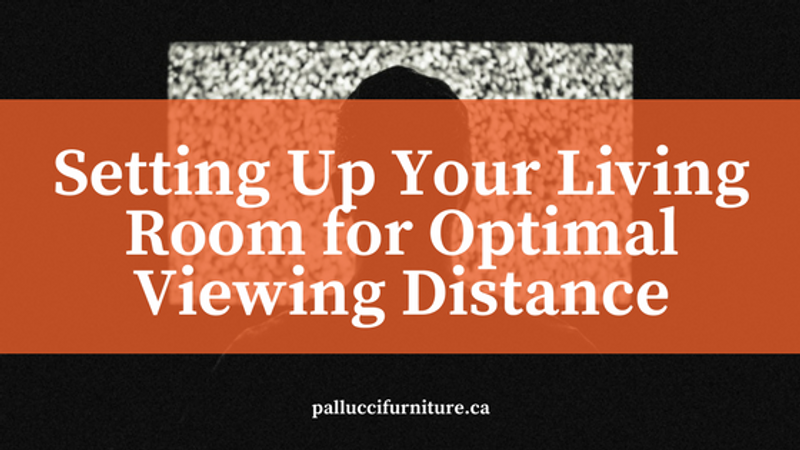
Living Room Viewing
In the modern age of entertainment, few things compare to the ways we view video, and multimedia. The screens and outlets that satisfy our insatiable appetite for content, news and visual stories are the vessels by which we consume our worldview and learn about what’s going on around us.
The often misrepresented truth about screens and their quality is that ‘bigger is always better.’ Not always true. There are very specific formulas that can help you to gauge which type of screen and what size of screen will create the optimal viewing distance for your specific living room. This formula is derived by taking into account the human visual system and the capacity of your eyes to viably interpret the inherent quality of your screen.
The human eye possesses the ability to consume an approximate 210 degrees of horizontal space, and 150 degrees of vertical range; this means that filling your field of view for some types of content - like a loud and powerful summer blockbuster, for example - will amplify your experience. Meanwhile, watching the news doesn’t require that type of experience. The optimal viewing formula takes into account an average of viewing styles.
Field of View
The field of view is defined as the full extent of the observable world that can be seen at any given moment.
The Society of Motion Picture and Television Engineers recommends filling your field of view up about 30 degrees as a base for a “good” viewing experience for all types of content. A viewer that uses their setup for movies most of the time will benefit from sitting closer to the screen to increase the field of view to about 36-40 degrees - the THX recommendation for movie theatres. THX also recommends a standard 10-12 foot distance from your screen, which by using a distance calculator, translates to a 70-75 inch screen (this distance also accounts for a good surround sound system).
Now, that’s a relatively big space. When sizing your screen for a more compact living room that’s challenged in the square footage department, this ratio is all relative. Here’s a TV Size-Distance size break-down:
- 3-5 feet away - 32”
- 5.5 feet away - 40”
- 6 feet away - 43”
- 7 feet away - 50”
- 8 feet away - 55”
- 9 feet away - 65”
- 10 feet away - 70”
- 12 feet away - 75”
To put this into perspective, according to award-winning television engineer, Bernard Lechner, the majority of people can comfortably position their sofa about 9 feet from their screen, dictating a 40 degree field of view and a 65” screen.
Vertical Field of View
Considerations should also be placed on the vertical height a screen is placed in correlation to your rooms seating position. Common practice is to horizontally level the bottom or middle of the screen to the viewers eyeline. THX recommends that viewers should not have to look upwards more than 15 degrees to comfortably view a screen - this means that using a screen as a type of mantle piece replacement can be problematic.
Fixed Distance
A fixed distance approach to optimal viewing uses a simple mathematical formula to find the perfect sofa/TV distance for HD screens. Simply multiply the measurement of the screen by 1.2 to translate to a 40 degree field of view. To account for SMPTE recommendations of 30 degrees field of view, multiply by 1.6.
These recommendations were first formulated in 2007 when most manufacturers were still introducing HDTV units. These days, optimum living room viewing distances are usually stated in a variety of measurements - ultimately leaving the choice up to the preference of the individual consumer.
Room/screen integration plays a vital role in sizing a screen for a room as well; a large TV can easily become an unnecessary focal point, and a screen that’s too small can become lost and difficult to watch.
Manufacturer Recommendations
Different manufacturers also offer modest range recommendations for optimal viewing. Most recommend a variety of about 31 degrees. For example, RCA recommends viewers position a 52” inch screen 6-17 feet away from the sofa. Meanwhile, Toshiba recommends that a 50” screen be positioned 5-7.9 feet away from a seating position.
Retailers also contribute their own models for optimal viewing. Best Buy, for example, recommends a middle ground; a 50” screen should be 6.3-12.5 feet away from seating as optimal viewing practice.

